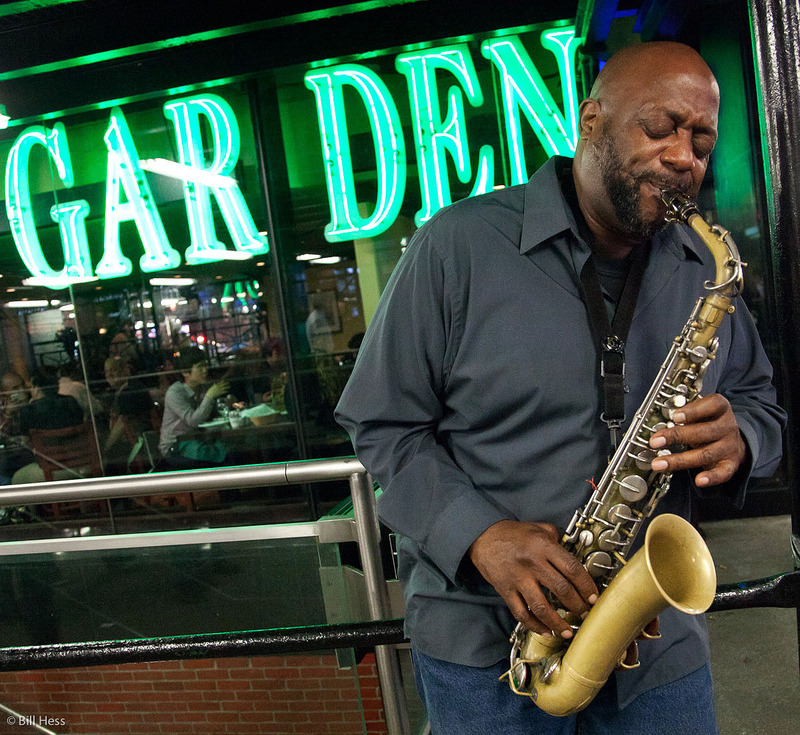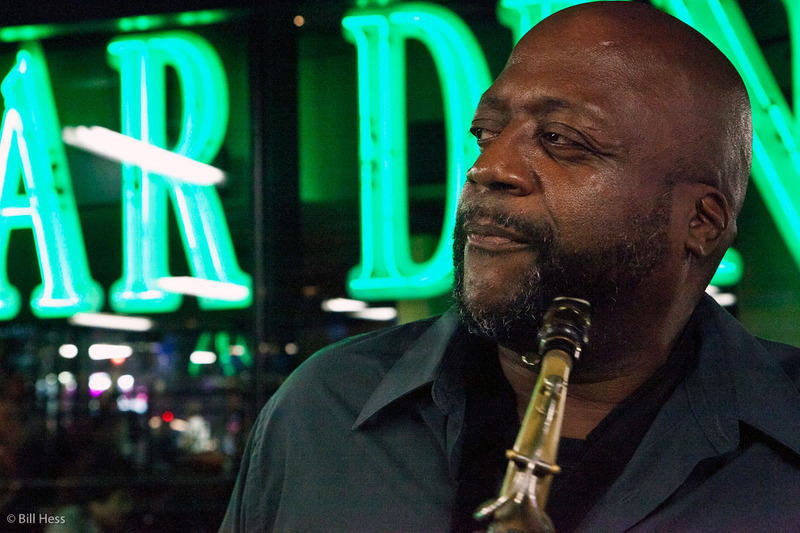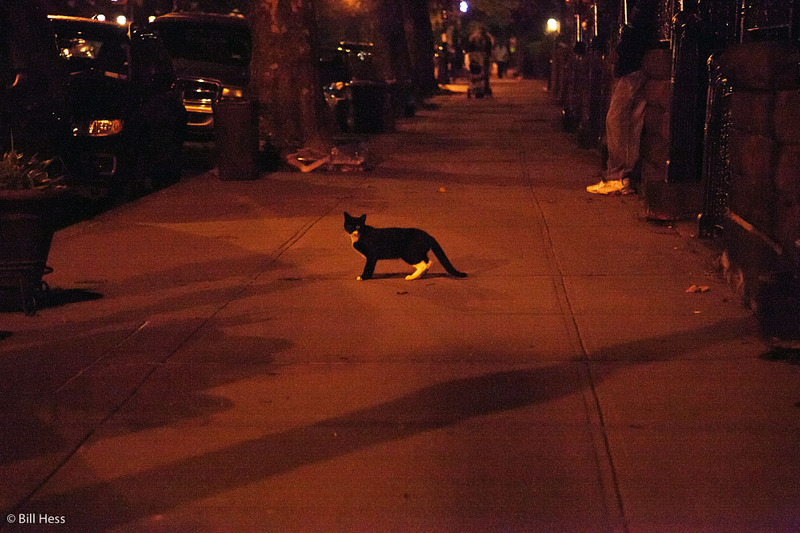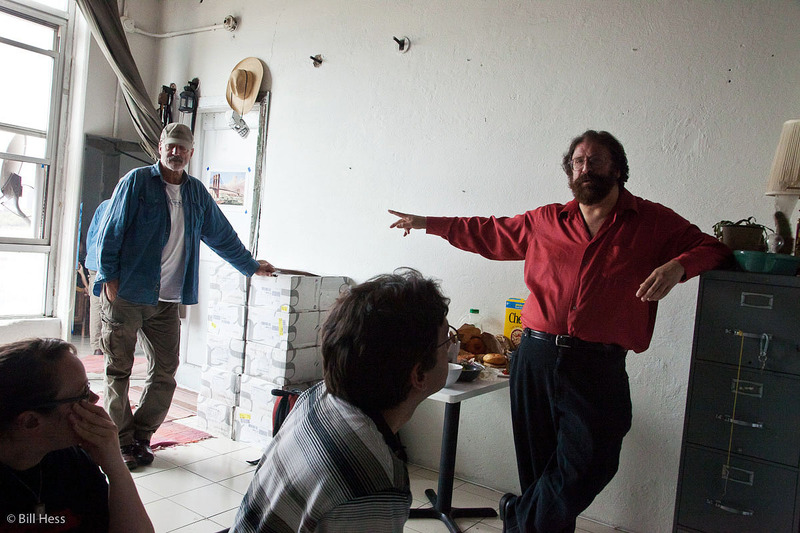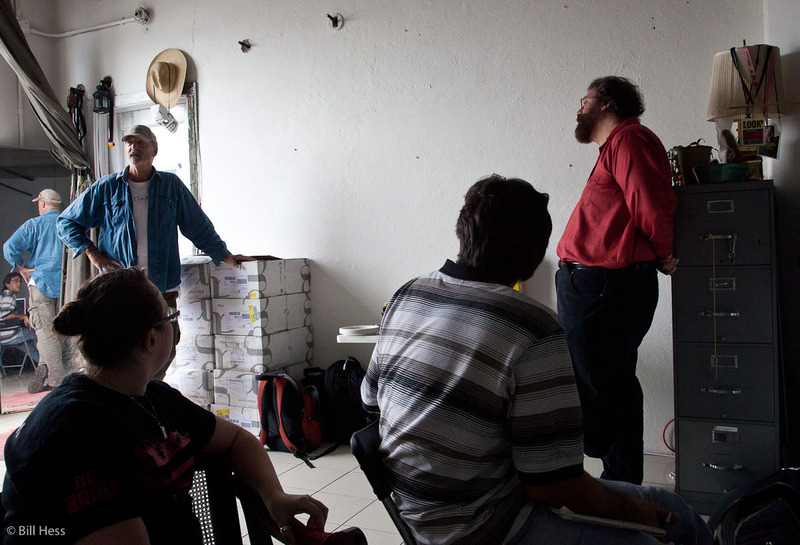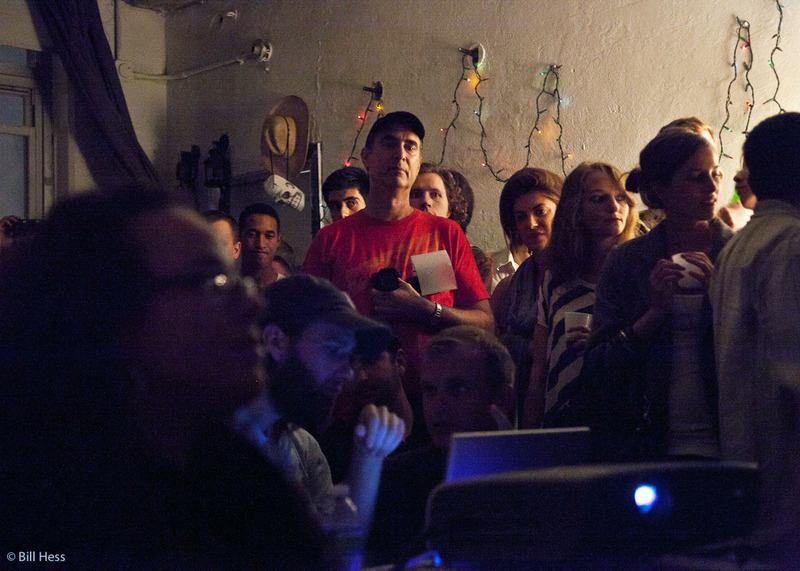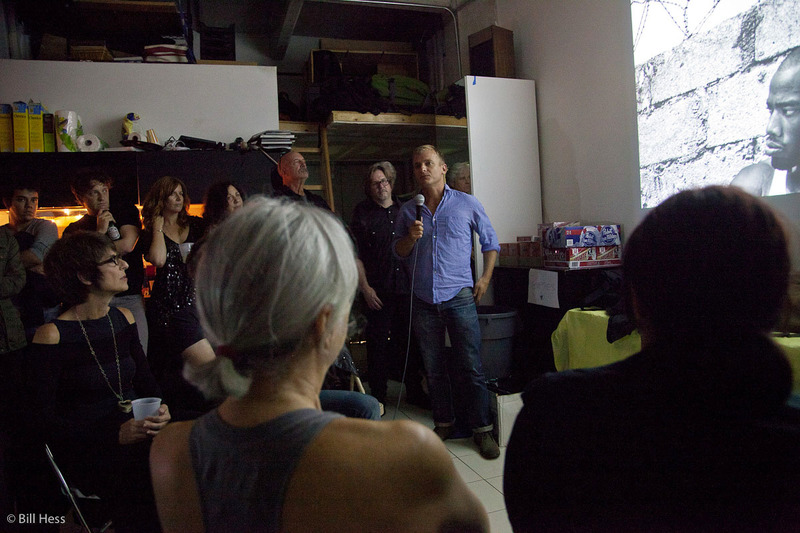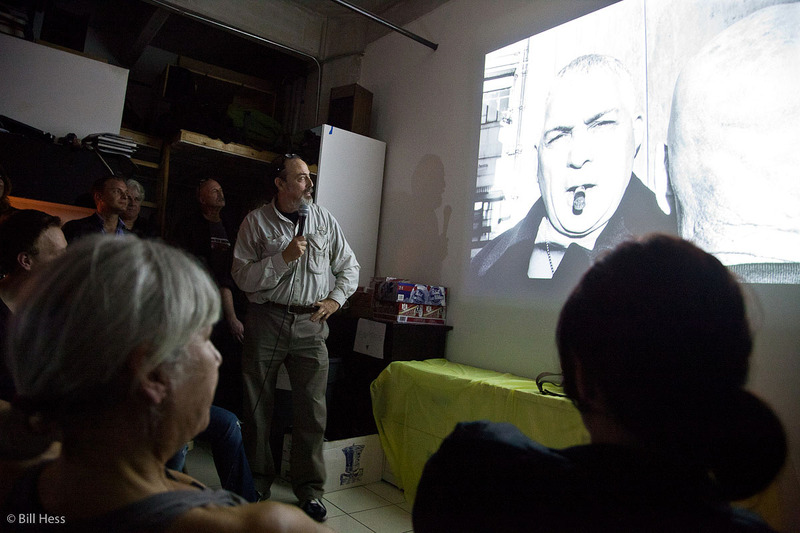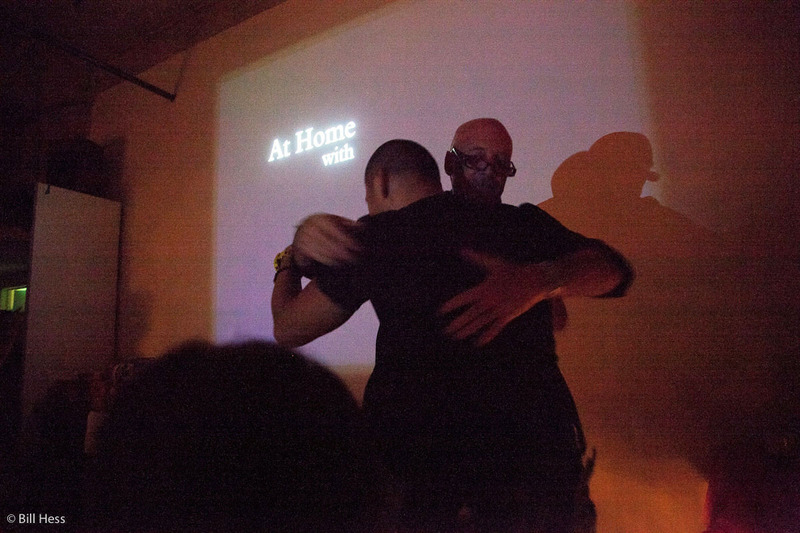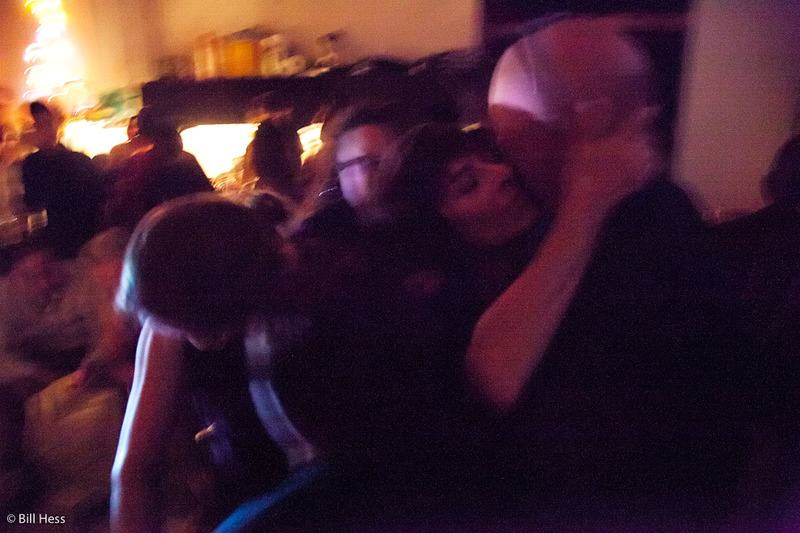David Alan Harvey Workshop, entry 19: I leave Times Square and then in the final push encounter technical diffculties; iconic photographers Anderson and Gilden - and then the Loft show
 Thursday, January 26, 2012 at 3:01AM
Thursday, January 26, 2012 at 3:01AM For some reason, it has been very hard for me to bring myself to put up tonight's post. All day long, I have been growing more and more depressed at the thought of it. Before posting, I wanted to address a few comments that have been left since yesterday, but I could not make myself do so. When I would sit down to do it, my arms would grow heavy like lead, and so would my head.
I could not make words. I could not type.
The same thing happened each time I thought I would finally put this post up. I couldn't bring myself to do it. Finally, about 9:00 PM, I made myself select the pictures. I had only a few pictures to choose from, yet still I had a hard time of it. Finally, I did select the images and ran them quickly through Lightroom and Photoshop. By then, it was just about 10:00 PM.
Now I could not make myself upload the pictures. I decided I needed to eat a mediocre hamburger first. I warmed up the car, drove to McDonald's and ordered a quarter-pounder with cheese, small fries and a cup of water.
Now I am back. I have uploaded the photos. The lead feeling is still there, but I have to get it done, so, even though I do not feel I can type another word, I am making my fingers type. Jim, the good black cat, sits on my desk between my keyboard and the monitor, making it difficult for me to see what I am working on.
I suppose I could make him move, but I doubt that I will.
So what has triggered this blue feeling in me? Is it because all of this is finally coming to an end, and somewhere inside me I don't want it to? Not long after the workshop, David launched an innovative, new kind of workshop. He went to Rio, where he had completed a long term shoot for National Geographic, but now wanted to finish off the shoot for a personal project, a book based on a single night that happened years ago, but stayed with him forever.
Yes, of course, it involved a woman.
Anyway, he kept a blog as he did the book shoot and in it showed us and told us what he was doing, let us face the questions that he faced, and even sometimes even let us help him edit his pictures. He had a staff of "fixers" - all Brazilian, all women, all beautiful, all smart - who helped him as he went about setting up shoots, getting prints made to hang on the wall to help him better visualize the editing and process and did whatever they could to take care of all extraneous matters so that he could concentrate on his shoot and his workshop blog.
Throughout, it felt to me like an extension of the Loft Workshop. Even though it was online, the experience often grew intense. Shortly after the online workshop ended, I began this series. I had intended to complete it in a week - but how long has it been? Three weeks? Four? I don't know. I have lost track.
So maybe I just don't want the experience to end.
Or maybe it was the experience I had with the IRS today that put me into this blue state. The task was small and should have taken five minutes, certainly no more than two, but took over two hours, most of which was spent listening to horrible music over my iPhone.
I don't know.
But, music... I had been on my way out of Times Square when I found and photographed Ruth, but after I finished, I decided to take a quick walk around the perimeter. That was when I came upon this fellow, playing saxophone blues in front of Olive Garden.
When I first discovered Times Square - I think in the year 1980 - there were musicians playing blues on the street then, too, but it was very different Times Square. There were many places to eat, some of which had chickens hanging in the window and all the food was good - the pizzas had to be the best in the world - and the Pretzels... how I miss those pretzels! There was no Olive Garden, or anything like an Olive Garden. There was a McDonald's and an Sbarro, but otherwise no chain food that I remember.
Porn stores with horrifying life-sized dolls hanging from the ceiling, clearly visible from the sidewalk, sat right next door to Broadway Theatres. The crowds were just as thick then as now, but among the flowing masses of people there were pimps and prostitutes, conmen who worked their schemes openly upon the gullible. I was advised to keep my wallet in my front pocket and maybe a thumb too, so that I would not get ripped off by a pick-pocket
The porn stores are gone now, replaced by Disney and the like, and if there are pimps and prostitutes they are much more subtle now. I did not recognize any. It is a much more safe and, naked cowgirl and cowboy aside, more family friendly environment now, but when you see a man such as this standing in front of Olive Garden playing the blues on his saxophone, somehow, it seems that something has been lost.
Anyway, it was time for me to get back to the apartment and select some images to take to the next morning's critique session.
I came upon this cat as I walked from the Brooklyn subway station to the apartment that five of us had rented together. I had seen the cat before, several times, from the first day on. I like cats, and I liked this one. It made me feel good, like maybe after nearly a week of failure, frustration and disappointment, I might pull this together afterall.
Yet, I was so tired I wondered how I could pull it off. I have a huge amount of experience in staying up and working all night, even for two nights in a row and sometimes three - days included, too, but I didn't feel like I could do it this night. Cumulative exhaustion. Before leaving home, I had sunk myself into the task of making a preliminary draft of what might have been my last Uiñiq. I had put in some back-to-back all-nighters. I had slept for only an hour on the night that I traveled from Wasilla to New York and I had never gotten more than four hours sleep during any night of the workshop. Most nights, it was more like three hours.
It had been so hot that what sleep I had gotten was uncomfortable sleep.
Even an allnighter would not really give me enough time to do a good edit of all the Times Square pictures that I had taken. I had mentally kept track of images that I thought good, so I decided not to even try to look at the entire take, but to drop in here and there where I knew these images would be, make my selections quick and then I could do it.
I decided that this scheme would work well enough that I could afford to take a nap. It would take awhile to download my pictures into my newly-repaired laptop. I plugged in one of two cards, dozed nervously and lightly while it downloaded. It was now somewhere between 1:00 and 1:30 AM. I set my iPad alarm for 4:00 AM, started the download for the second card, laid down upon the couch that served as my bed and then dozed off as best I could. I got up just before 4:00 AM and turned off the alarm before it chimed.
I cannot stand to hear an alarm go off.
I opened Lightroom... and it froze. It would not import my CR2 RAW images into the editor. I force-quit it, opened it again - and again it froze. I did another force-quit, then restarted the computer and tried again - same result. I still have Photoshop CS3 and it will not open the RAW CR2 files from my camera. I must convert them in Lightroom.
If I could not get Lightroom to work, I could not edit or process my CR2 images into jpegs. I could not show them at the critique session. Once again, I found myself driving onto Humiliation Road. I decided to throw away all the 1:1 Lightroom previews and see if that would help. So I did, and the process took over two hours. When it was done, I encountered another problem.
Once I solved this final problem, I had ONE HOUR before I would have to leave for class. I knew I would have Ruth in the show, so I dropped into the middle of her take and grabbed two images that looked good. I already knew which wedding picture I wanted, so I found it real quick, then added one more. I had to have a certain portrait of the divine woman. I remembered the little boys who had lept so excitedly into the air when they discovered they had been chosen from above, so I ignored my larger "Chosen From Above" take and chose them.
In this way, I skipped through the take like a rock across a pond, grabbing images. While my workshop mates had been editing and undergoing critiques through everyday of the week, I had gone through one critique - that of my failed Mormon missionary essay. I decided that I would still use one image from that to begin my show, so I grabbed the one that had best survived the critique.
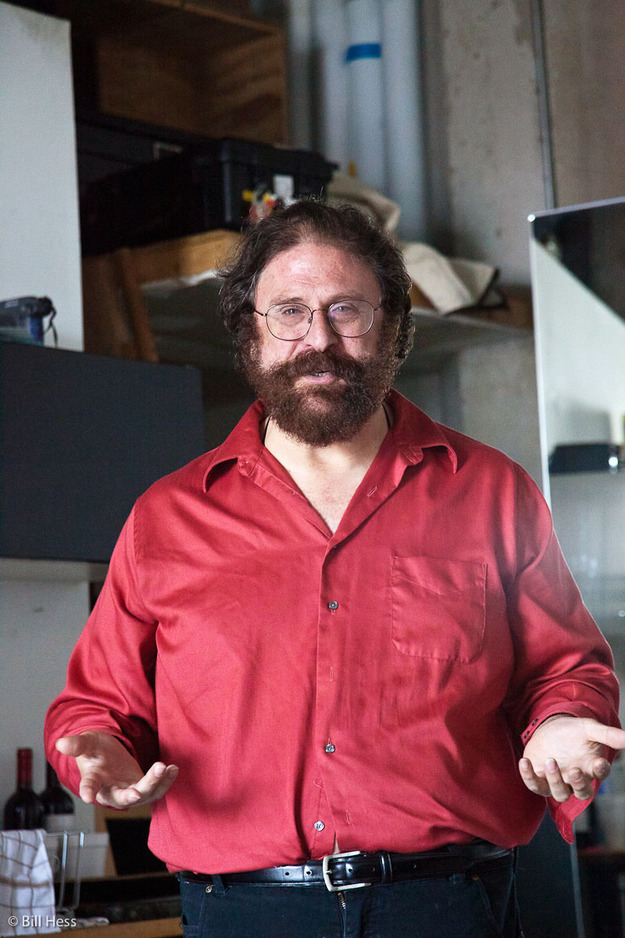 When the workshop began, I had about twenty images ready to present to David and the class. I wanted a ten image show, and I knew that at least half of those I brought would not survive the critique.
When the workshop began, I had about twenty images ready to present to David and the class. I wanted a ten image show, and I knew that at least half of those I brought would not survive the critique.
Then, when Michael Courvoisier projected the "contact sheet" of all 20 or so of my images onto the screen, I felt sick. Suddenly, it all looked like junk to me. Not one image looked good. Damn!
Then David said, "Bill, you have some excellent images here," - or something close to that. Then he went through and nicked the ones he liked the least. Off went the groom. I didn't mind. The bride was better. Soon I had my show. This fellow, by the way, the one at left in the red shirt, was not involved in any of this. This is New York Times photographer James Estrin, who was part of a team that won a Pulitzer Price for a major essay series on race in America.
Mr. Estrin also created the New York Times Lens Blog, which he now serves as co-editor. He was our guest speaker on this, the final day of the Loft Workshop.
Now that it is all in the past, I feel very badly that I did not take any pictures of the critique on this morning. I am a little puzzled about why I didn't. Truth is, I shot very few pictures during all the workshop sessions I attended. As everyone in the room was a photographer, it felt a little pretentious to me to pull out my camera and shoot things the way I normally would have. What if we all did that?
So I shot very few workshop pictures. I don't think I ever left the chair I was sitting on to shoot the few I did. And now I feel badly about it. I should have photographed all my classmates hard at work, so that I could show them to you right now, but I didn't.
I did photograph Mr. Estrin, though. Although he did not know it until his lecture ended, he and I already knew each other well. We had exchanged many emails and some phone calls, too, over the course of a full year, the final result being the piece that he and Karly Domb Sadoff wrote up about me and my Arctic photographs in Lens Blog, titled, A Warm Feeling for the Arctic.
Part of what is going on in this exchange between David and James Estrin is their message to the class that to succeed, a photographer not only needs to have talent - which abounds in this digital age - or to work hard, but also to know the right people, to have connections, and build on those connections.
And, after this workshop, every student would have high connections in the photo world. It would then be up to the students to utilize these new connections.
Now it is evening. A standing-room only crowd has gathered in the loft. Michael Courvoiser (baseball cap) is working with Chris Anderson, one of two "iconic" photographers who will present shows ahead of the student work, to ready his slide show.
Chris Anderson is a Magnum photographer who made his reputation covering war and hardship, such as the time he set out with some refugees from Haiti who hoped to make it to the US in a boat named, "Believe in God." The boat sank. As it was going down, all, including Anderson, thought they were going to drown. Anderson kept shooting until finally they were rescued.
After seeing a great deal of war and torment, he decided to spend time at home in Brooklyn, where he lives in the same building as David, and to turn his lens toward his wife and son. He created a beautiful book, titled Son. He was also the first to convert a paper photographic book into an iPad book with Capitolio.
As he presented his show, Anderson would very gracefully swing his arms to direct Michael through each slide show. His entire body swayed with the motion.
Once you have seen the work of Brooklyn native Bruce Gilden, you will not forget it. His subjects range from gangsters to Haitian earthquake survivors and whatever he shoots, he gets in close and takes the viewer right to wild edge of his subject's humanity. It was the Michelangelo Antonioni movie "Blow Up" that inspired him to become a photographer.
Many of his photo subjects look like hard, rugged, tough, even somewhat twisted individuals and so does Gilden, a little bit - but David knows him will and says it is hard to find anyone with a bigger, more giving, heart than Bruce Gilden.
We could hardly have been given harder acts to follow than Chris Anderson and Bruce Gilden, but follow them we did. And here is our student show, titled, "At Home With David Alan Harvey." I wish you could see it bigger - especially the verticals - but here it is. I hope you enjoy it.
Immediately after the slideshow, the room broke into applause. Zun Lee stood up, unable to hold back his tears. David embraced him. If you have watched the video, then you understand Zun's tears and this moment. If you haven't, please do so when you get the time.
Then everybody was hugging - the whole class. Me too. I tried, but it was kind of hard to take pictures in the middle of a big group hug, in a darkened room, so I will stop here.
I am not quite done. Tomorrow - no, later today, after I go to bed and get some sleep - I will put up two followup pieces. Then I will be done.


